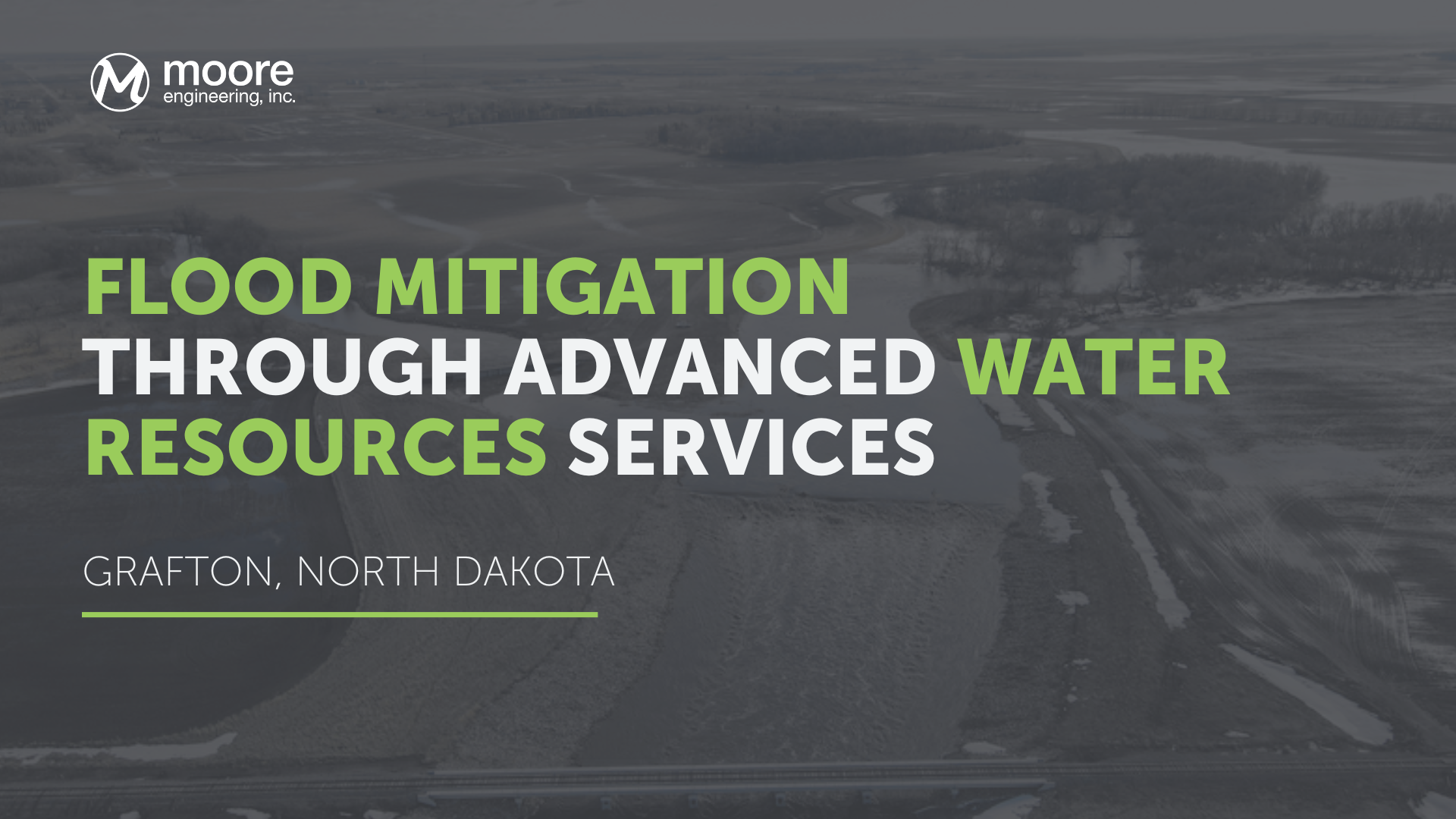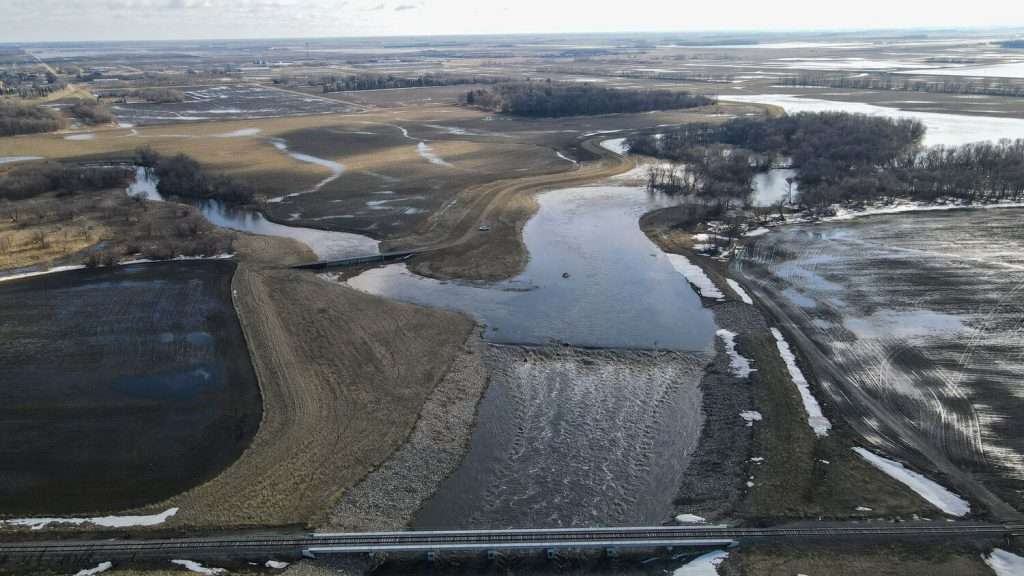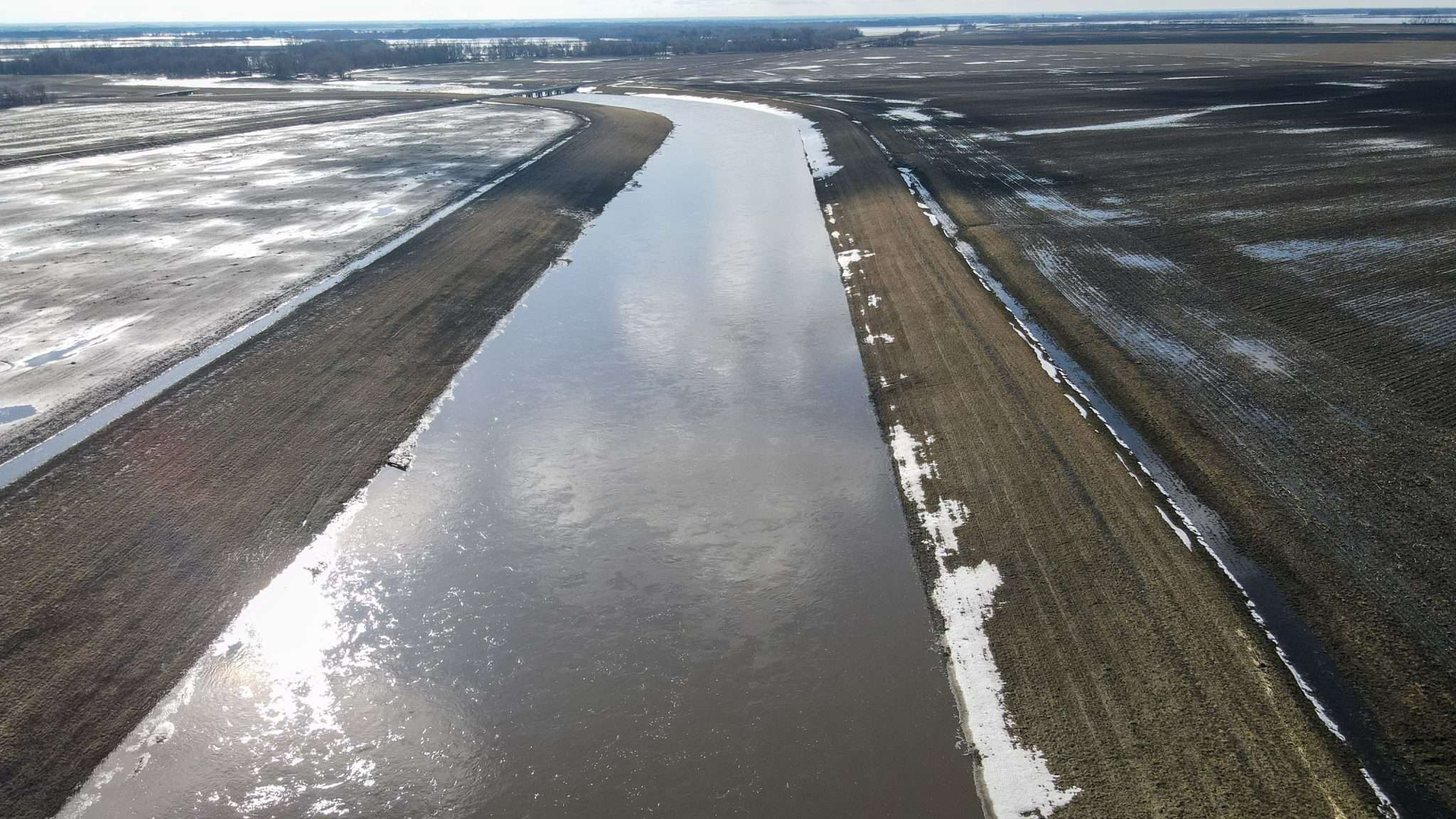
Flood Mitigation through Advanced Water Resources Services
Protecting cities from the destructive effect of flooding is one of the many ways Moore Engineering fulfills its mission to “improve lives by building strong communities.” In the City of Grafton, North Dakota, frequent flooding was a fact of life for residents, business owners, and city officials.
Situated along the Park River, Grafton’s geography makes it particularly susceptible to both riverine and overland flooding. After years of fighting back floods, Moore Engineering’s expertise in water resources engineering, flood mitigation, and flood modeling played a pivotal role in safeguarding Grafton against future threats.
Persistent Flooding Challenges
For decades, Grafton has grappled with widespread flooding. Caused by spring snow melt and summer rainfall, the river would swell, spilling over its banks and flowing across the flat North Dakota landscape. Being downstream of the Park River’s three branches and near the McLeod Drain meant that flooding was a recurrent and damaging event.
Record-breaking floods in the 1950s compelled Grafton city officials to construct a series of dams upstream from the city. Although the dams had a mild positive impact, it was not enough to fully address the issue. The community needed a new project to prevent floods from causing damage. It also aimed to lower expensive flood insurance premiums and economic losses to the business community.
After years of persistent floods, the economic cost to the city and its residents became a substantial burden. The inherent risk of being based in Grafton required over 500 property owners to pay $478,200 per year in flood insurance. Since 1978, nearly 300 flood insurance claims have totaled $805,927.
Expert Water Resources Engineering for Flood Mitigation
In 2014, Moore Engineering, KLJ Engineering, and Barr Engineering were tasked with the monumental job of mitigating the most damaging effects of flooding once and for all. This would be no small feat. The complexity of the flood plain required a high level of technical analysis and design. The project needed to be accredited by FEMA while not negatively impacting areas outside of the project.
Hydraulic Modeling
Before a solution could be crafted, Moore Engineering set out to understand the extent of the problem. Using specialized software, our team of experts created a model of a 100-year flood event to estimate its impacts on existing infrastructure. As anticipated, the model projected that a flood of this magnitude would affect almost the entire city. Comparing the pre and post-construction models revealed that Moore Engineering’s proposed plan would protect residents and businesses in even the worst conditions.

Levee, Bypass Channel, and Gate Systems
Using the hydraulic modeling data, the engineering team developed a design that included the construction of 12.2 miles of levees around the city to keep overland flooding at bay.
A river closure structure was created to control the volume of water flowing through the city via the Park River. Gates on the structure could be closed during high-risk flooding periods. The excess water would then divert to a new 2.9-mile bypass channel, leading it around the city before rejoining the river’s natural flow. This system allows city officials to control the level of water flow through Grafton, significantly reducing the risk of flooding.

Additional Infrastructure Enhancements
The project also involved the creation of essential infrastructure to support the new flood mitigation system. Efforts included the construction of multiple field access roads, bridges, and crossings, ensuring easy accessibility and maintenance of the flood control structures.
Funding Support and Regulatory Compliance
Securing funding and navigating the regulatory landscape was key to the project’s success. KLJ Engineering worked closely with the North Dakota Department of Water Resources, helping secure over $32 Million in funding. This financial support covered nearly 70% of the project’s total cost of $48 Million.
From beginning to end, Moore Engineering ensured compliance with all federal, state, and local regulations. A pre-project Conditional Letter of Map Revision (CLOMR) and post-project LOMR were submitted to FEMA. In January 2023, the project received official FEMA accreditation.
By the Numbers
- 2.2 million yards of land excavated
- 850,000 yards of levee constructed
- 64,500 feet of inspection trench constructed
- 55,000 tons of riprap installed
- 31,000 feet of piling installed
- 29,000 feet of sheet piling installed
- 1,200 feet of bridges constructed
Putting it to the Test
In May of 2022, the fourth-largest flood on record put the newly constructed project to the test. As modeled, homes, businesses, and public buildings were spared. The successful management of the 2022 flood definitively demonstrated that residents would no longer have to rely on temporary measures like sandbagging to protect their city.

Economic and Community Benefits
Residing in an area at high risk of flooding imposes significant financial strain on property owners. However, Moore Engineering’s strategic planning and diligent execution have effectively removed Grafton from the 100-year floodplain designation. This pivotal change has led to a substantial decrease in flood insurance premiums, alleviating a major economic burden for the community. As a result of our expert water resources engineering team’s efforts, Grafton now collectively enjoys an annual savings of approximately $500,000 in flood insurance costs.
Improving Lives by Building Strong Communities
After nearly a century of fighting back floods and a decade of work, Grafton’s residents can be at ease. The team of engineers has set a new gold standard for flood mitigation in the Midwest. There is no greater joy than creating sustainable solutions for the communities we serve.
If your community has struggled to mitigate damage from flooding, we encourage you to contact our water resources team.